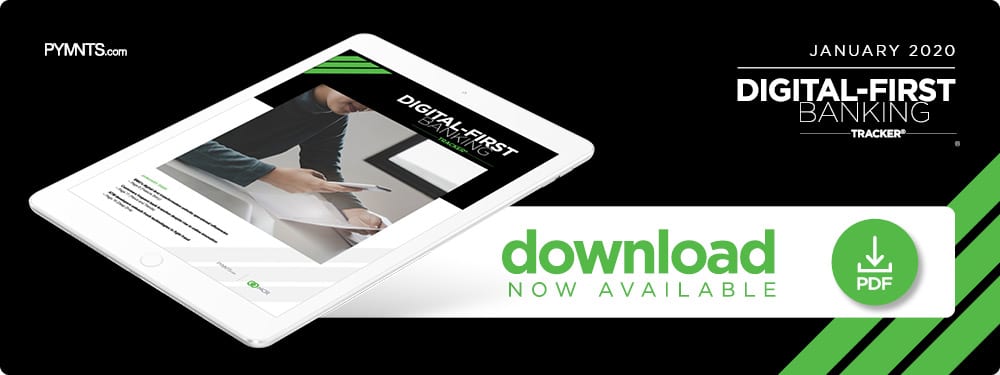BMO’s Digital-First Transformation Unlocks Operational Efficiencies

Bank customers increasingly prefer self-service transactions over branch visits, and financial institutions (FIs) are meeting them where there. Investments in features — such as remote authentication and mobile deposits — are delivering digital conveniences, and yielding unexpected benefits for staff. In this month’s Digital-First Banking Tracker, Kyle Barnett, chief operating officer for U.S. personal and business banking at BMO Harris Bank, discusses how these technologies have allowed staff to focus on more complicated transactions, while unlocking operational efficiencies and reducing costs.
The banking industry is increasingly favoring self-service, as customers making transactions grow to prefer tellerless ATM and kiosk interactions. These operations are quantifiably more efficient: A recent study found that customers typically spend nine minutes to acquire a check from a bank teller, but only 40 seconds to complete the same task with a self-service kiosk.
Banks are rapidly undergoing digital-first transformations to offer these services. BMO Harris Bank, originally founded in 1817 as the first bank in Canada, is one such example. BMO expanded its footprint to the United States by purchasing Harris Bank of Chicago in 1984. The bank now handles $512 billion in assets for more than 12 million customers, many of whom have undergone their own personal banking transformations.
“We see that more and more of our customers are migrating toward self-serve interactions, especially for the simpler, straightforward transactions,” said Kyle Barnett, BMO’s chief operating officer for U.S. personal and business banking. “This is really freeing up our branch bankers to have more time to dedicate to customers, and have better holistic conversations, and create more personalized recommendations.”
PYMNTS spoke with Barnett about BMO’s recent in-branch retooling to cater to self-service interactions.
BMO Deploys In-Branch Improvements
BMO has implemented several new technologies as part of its digital transformation. First was a method to scan checks and process deposits in real time, creating virtual deposit tickets and saving customers from filling out paper deposit slips.
“This technology allows for faster deposit processing, and, in most cases, [deposits] clear within hours instead of within days,” Barnett explained. “Generally speaking, customer feedback is positive because they no longer have to fill out deposit slips.”
Another improvement is what BMO calls “easy PIN authentication,” in which customers use their debit cards — rather than driver’s licenses or state-issued IDs — to verify their identities. The system accelerates customer-conducted transactions, and helps branch staff by aggregating data instantly on the employee’s screen.
BMO rolled out both the check-scanning and easy PIN authentication innovations to more than 500 branches at the end of 2019. One more major component of BMO’s digital transformation was enabled earlier, however: an instant-issue debit card.
“If a customer walks in and opens up an account [during the] same interaction, they can actually leave with a fully functioning, embossed card that has their name on it,” Barnett said. “They also get the PIN right there as part of the account opening, and can even set up a custom PIN if they want at the ATM.”
This capability allows customers to use their cards at ATMs within minutes of leaving bank branches, and Barnett said that happens on a regular basis. The instant-issue functionality also comes in handy for lost debit cards. Customers who misplace their cards can receive replacements immediately, rather than wait to get them in the mail.
These new functionalities have provided several benefits for BMO’s in-branch operations. Chief among them are greater staff efficiency and time savings, along with boosted data-gathering and personalization efforts.
How The Digital-First Initiative Helped BMO’s Staff
All of BMO’s improvements have led to vastly different in-branch customer experiences. Digitized services have reduced the number of customers requiring in-person teller interactions, and simple exchanges take a fraction of the time that was required before.
“We still have customers who are using the branch, but they use it less for simple deposit-type transactions and … more for holistic conversations with bankers about things like account opening or for financial guidance,” Barnett said.
A case study on BMO’s digital push found that BMO employees have saved between 15 and 30 minutes per day on processing forms. This may seem like a small number, but spread across BMO’s entire staff, the transformation has saved workers thousands of hours.
This boosted staff efficiency has also improved tellers’ ability to help customers. The data gathered through self-service channels is available to staff during customer interactions, helping them personalize recommendations.
“If a customer wants to know when a payment cleared or when a payment is due, or if there’s some transaction on their account that they’ve been waiting for, [workers] can see those things in real time,” Barnett explained. “This allows [customers] to track and monitor what’s going on with their financial situation.”
The benefits of BMO’s digital-first transformation have clearly supported its staff and customers. Other banks may see similar successes by following in BMO’s footsteps.

